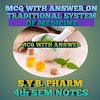RAW MATERIAL USED FOR PREPARATION OF CULTURE MEDIA
RAW MATERIAL USED FOR
CULTURE MEDIA (BACTERIOLOGICAL MEDIA)
CULTURE MEDIA: - Microbiological media,
or bacterial culture media is a growth medium used to grow
bacteria. In other words, bacteriological media are an artificially prepared
mixture of various nutrients for the growth and multiplication of
micro-organism.
Bacterial culture media is
used when a specific bacterium must be grown in order to confirm the presence
of an infection or study a specific bacterium further. There are thousands of different
media used today.
Most Common raw
materials or ingredients used in culture media are as follows…..
1.
Water
2.
Peptone
3.
Beef extract
4.
Yeast extract
5.
Meat extract
6.
Solidifying agents
7.
Buffering agents
8.
Other components
1.
WATER AS SOLVENT: -
Water plays a vital role in preparation of
culture media. For the preparation of culture media tap water, pure water or
distilled water may be used by dissolving various organic and inorganic
compounds. . All enzymatically controlled chemical reactions
occur within the cell in the presence of water. Water should be free from
copper ion because copper ion inhibits the growth of micro-organisms. The
conductivity of the water should be less than 15 microsiemens.
2.
PEPTONE: -
It is a complex mixture
of partially digested proteins obtained from lean meat, heart muscle, casein,
fibrin, soya meal etc. The important constituents are proteases, amino acids,
inorganic salts which include phosphates, potassium and magnesium and growth
factors including nicotinic acid and riboflavin. Peptones mainly supply
nitrogenous material and also act as a buffer. Peptone is stored in a tightly
closed container because it is hygroscopic and becomes sticky when exposed to
air.
3.
BEEF EXTRACT: -
Beef
Extract is derived from infusion of beef and provides an undefined source of
nutrients. Beef Extract is a mixture of peptides and amino acids, nucleotide
fractions, organic acids, minerals, and some vitamins. It complements the
nutritive properties of peptone by contributing minerals, phosphates, energy
sources, and those essential factors missing from peptone.
Beef
Extract is frequently used at a concentration of 0.3 to 1.0% in culture media,
although concentrations may vary depending on the nutritional requirements for
the medium formulation.
4.
YEAST EXTRACT:-
Yeast
extract is prepared from washed cells of baker's yeast or Saccharomyces. Yeast extract
contains wide range of carbohydrates, amino acids, growth factors (vitamin B group)
and inorganic salts. Yeast extract is used mainly as a source of vitamins and
may be substituted for meat extract.
5.
MEAT EXTRACT:-
Meat
extract is obtained by hot water extraction of fresh lean beef/meat and then
concentrated by evaporation. It contains gelatin, albumoses, peptones, proteoses,
amino acids, creatine, creatinine, purines, mineral salts, carbohydrates and
growth factors includes thiamine, nicotinic acid, riboflavin, pyridoxine and
pantothenic acid etc.
6.
SOLIDIFYING AGENT:- (GELLING AGENT)
There are various types of solidifying agents
such as gelatin, carrageenanas, alginates, polyaccrylamides are used to
solidify culture media but the most important gel forming substance used in culture
media is agar.
Agar:
Agar is a long chain polysaccharide obtained from seaweeds algae. Agar is a
mixture of two polysaccharides such as aggarose (70%) and agaropectin (30%). It
also contains calcium, chloride, magnesium, sulphate, iron etc. Agar has the
following properties...
·
It acts as good solidifying agent (2%).
·
It has no nutritional value in media.
·
It is bacteriologically inert.
·
Resistant to the action of all
microorganisms.
·
It is stable or firm at different
temperatures used for incubation.
·
It melts at 95 to 98°C and remains
liquid upto 40 to 42°C.
·
It gets solidified below 40°C.
·
Easily available and economical.
7.
BUFFERING AGENTS:-
The optimum ph of the
culture medium is also important for growth of desired micro-organism. The use
of buffer compounds at specific pk values is especially necessary when
fermentable carbohydrates are added as energy source. Such example of buffering
agents is phosphates, acetates, citrates, sodium chloride, & specific amino
acids that added to culture media.
8.
OTHER COMPONENTS:-
Many other substances
are added to culture media for specific purposes like growth factors for
fastidious organisms, Ph reducing compounds for anaerobic organisms
(thioglycollate and cysteine) whole blood to detect hemolytic enzymes etc.
CLICK BELOW TOPIC TO READ
1. |














0 Comments
Please do not enter any spam link in the comment box.